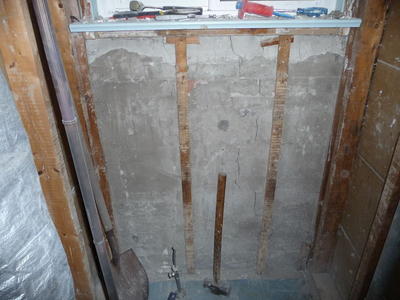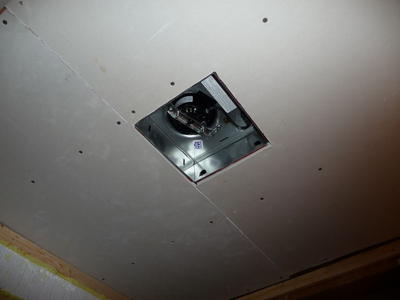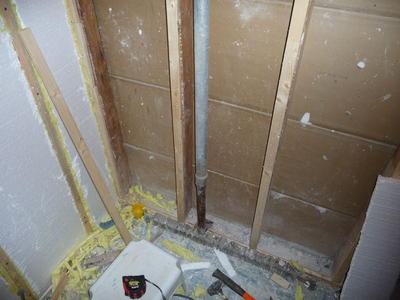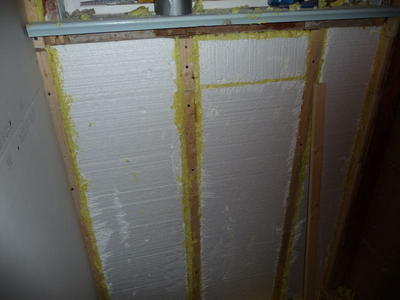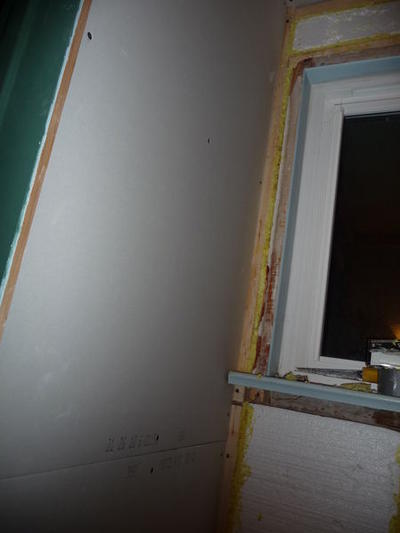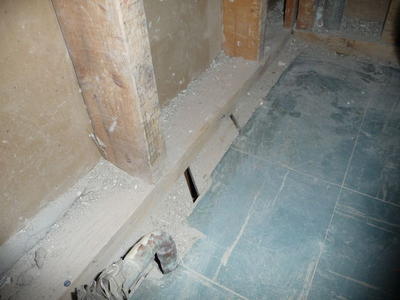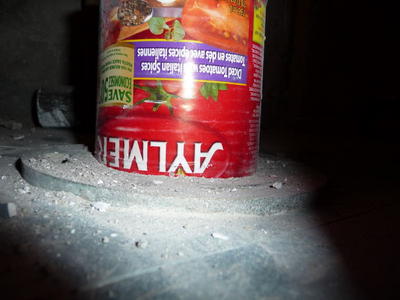2. I wouldn't worry, just open up a window and get yourself a good respirator. It would be in your best interest to get rid of it now and save the headache of trying to put new floor over the top of it.
3. My initial thought was it was probably a vent pipe due to the fact that there is a coupling in it and you can see a hub at the bottom of the stud wall. An upstairs room shouldn't have a vertical support column like that, usually steel poles like that are in basements holding up a beam, thats why I asked what floor you were working on. I would either fur the wall out to drywall over the pipe or cut it off at the top and bottom of the wall and get some rubber couplings and put PVC or CPV pipe in the wall to get it out of the way. This is the coupling I'm talking about, Most shops have the fernco brand
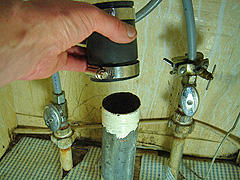
When you buy this make sure to tell them what kind of material the pipe is your coupling, it looks like copper coming out of the floor, coupled with galvanized and galvanized through the top of the wall. This could be wrong I'm not good at judging photos but if I am right then you will need a copper to PVC or CPVC whichever you use and a PVC/CPVC to galvanized to reattach it in the attic.
4. Doing an overlay will probably work fine, I suggested tearing it down because the job we are working on the plaster was literally falling off and it took like 10 minutes max to rip the lathe and plaster off of a ceiling that size. Running an exhaust fan vent right into an attic can be sketchy, good way put moisture into the attic. Is the attic well ventilated? You would be much better off to cut a hole in a gable end of your roof and vent through that or go through the roof if you feel ambitious.
